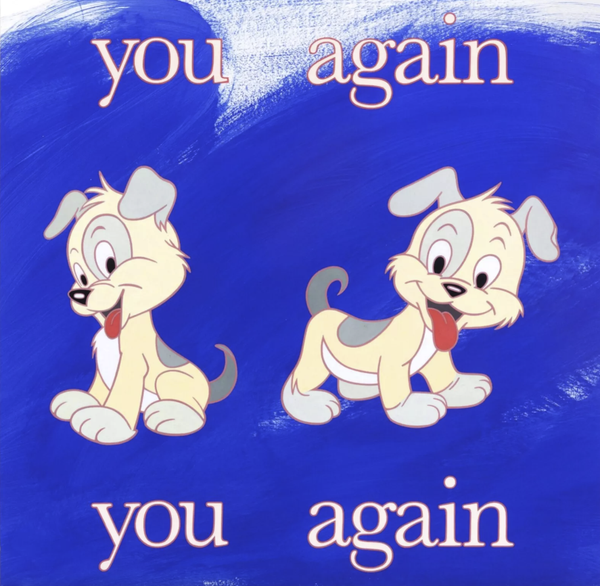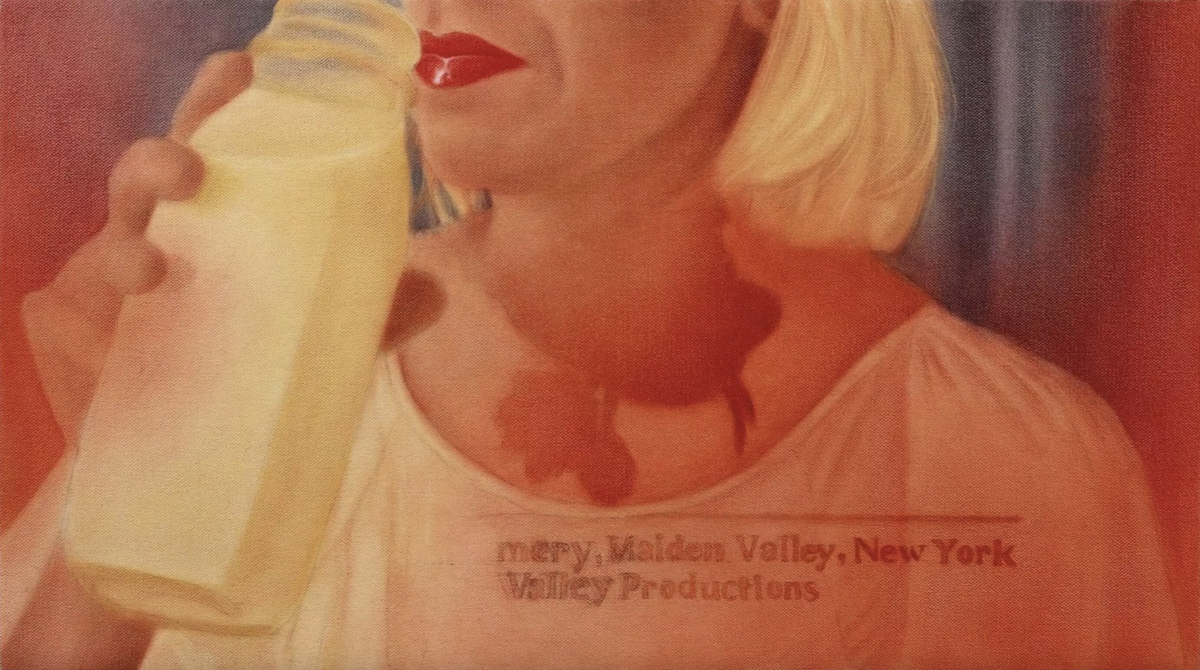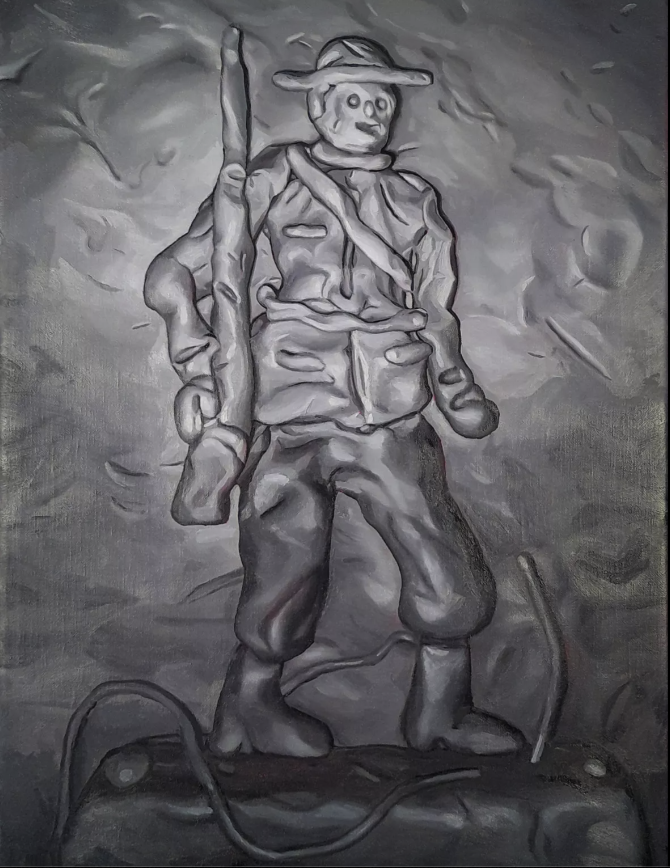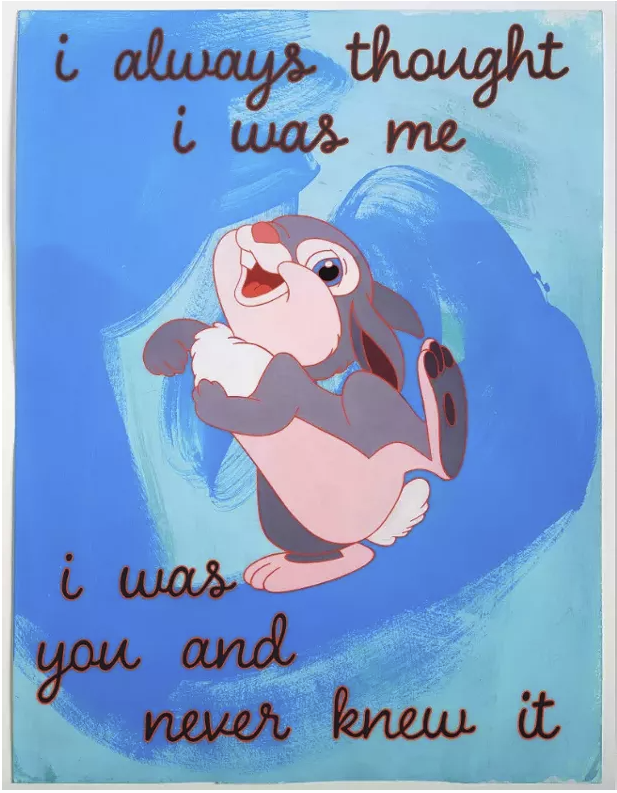Review: "Familiar/Unfamiliar" at Bill Arning Exhibitions in Kinderhook is Rewardingly Subversive
Writer Taliesin Thomas explores the show's "curatorial flirtation between the recognizable and the peculiar at once."

Writer Taliesin Thomas explores the show's "curatorial flirtation between the recognizable and the peculiar at once."

Everything is questionable these days, from the content of processed foods (is that real?) to the ulterior intent behind comments flung across various media platforms (is that for real?). On top of this, the AI-driven overload of digital imagery is now pushing our eyeballs into novel realms of the imaginary, forcing us to consider expanded definitions of “realness” within a dissolving aesthetic—Salvador Dalí’s melting clocks come to mind as a poignant visual embodiment of the prevailing weirdness.
The four-person exhibition “Familiar/Unfamiliar” at Bill Arning Exhibitions in Kinderhook explores such themes of cultural subversion and the iconography of popular culture through a series of paintings and works on paper that seem to align with the psychological substratum of the four seasons, revealing the curatorial flirtation between the recognizable and the peculiar at once. The exhibition is on display through May 17.

Till the Last Drop, Kevin Mosca, oil on canvas, 2024
First, let us revisit winter (currently fading out) as a time of soul searching and the sedate paintings of Erik Daniel White. Working in oil on linen as his medium yet manipulating the paint in such a way as to make it appear like three-dimensional Play-Doh, White focuses on banal objects and environments to heighten their materiality. In Spectators (2024) we encounter a stoic blue wall and windowpane with two pots of flowers set against an orange-pink curtain that begs the question: What more exists behind this smooth scene? In other lonesome works such as There’s a Rat in the House (2025) and Blue Bird (2025), animals serve as detached spirits existing in nondescript realms.
The existential chill of White’s work gives way to frisky spring energy and Sue Muskat’s playful Disneyesque bunnies and frolicking puppies. In three vibrant works on paper, Muskat employs a monotone backdrop for these lovable cartoon characters and frames them with pointed commentary. In So It Goes (2022), twin doggies smile uncontrollably as the words “you again” anchor the composition from above and below. With Empirical vs Rational (2002), a jolly rabbit lifts one leg in a joyful jig while a cryptic statement swirls about: “i always thought i was me” (at top) “i was you and never knew it” (at bottom).
From bouncy primavera to sultry summer, we behold Kevin Mosca’s cinematically inspired, milk-soaked series of crimson-hued fantasy paintings arranged in a grid. This body of work teases out a nonlinear narrative around a milkman protagonist (we never actually see him) in the fictional town of Maiden Valley (where milky dreams flow). Mosca’s Maiden Valley Cream (2024) sets the stage with a vision of the commercial design for this faux brand, while Lay Me Down (2025) features the milkman’s worn hat at the end of a workday.
Suggestive pieces such as Till the Last Drop (2024) show a woman clutching a slender glass jar poised patiently at her glowing red lips, and Half Full (2024) is a kinky, layered scene with hands around a small pool of spilled milk while evocative shapes and shadows perplex as much as they excite.
Bringing us full circle in a seasonal cycle are four quasi-Cubist gay telenovela-style works by Matt Bede Murphy done in an autumnal color palette. In these bright, dense paintings of men interacting with men, Murphy presents private scenes both rich and randy. In Dandy Man’s Night Out (2024), a finely dressed fellow with a smirk appears to have his hand on the rump of a body builder who leans back aghast (or intrigued?) while a flat-faced figure in a wild hat apprehends the spectacle and another looks away in an odd and compelling moment. With Studio Scene (2024), an artist and his model engage in a comfortable life drawing session, while The Flute Player and the Soldier (2024) features a well-hung red Cyclops with a Roman soldier clad in yellow who appears poised to raise his whip and carry out a beating.
If these four artists and their familiar-yet-unfamiliar iconography is any indication of the absurdist eccentricity of our times, then I am buoyed knowing that bunnies, boys, milk, and flowers are the enduring idols in a world gone mad.



